Oil is used in a transformer to insulate live parts and to remove heat. These are two main functions, but there is also a third function: insulating oils are a good information environment by means of which it is possible to diagnose the development of various defects. This is due to the fact that gases are formed and enter the oil during the transformer operation and with the development of various defects. All that is left to do is to “read” the information off the oil and to interpret it correctly.
Chromatographic analysis of transformer oil
Currently, the most proven method for “reading” the information off the transformer oil is the chromatographic dissolved gas analysis.
If a transformer operates properly and without defects, only carbon dioxide and carbon monoxide, sometimes methane, as well as oxygen and nitrogen will emerge in oil after a certain period of time. The presence of other gases indicates undesirable processes in the transformer, for example, decomposition of oil and paper insulation. The chromatographic analysis method is about measuring the concentrations of gases dissolved in oil. These concentrations are further used to determine the type of developing defects.
Here is a list of key gases the emergence of which in oil is the most typical of transformer defects:
- hydrogen — partial discharges, spark and arc discharges;
- acetylene — electric arc, spark discharges;
- ethylene — heating of oil and solid insulation to the temperatures exceeding 600 °С;
- methane — the oil and the solid insulation heat up to the temperatures of 400–600 °C; heating of the insulation is accompanied by discharges;
- ethane – the oil and the paper heat up to the temperatures of 300–400 °С;
- carbon monoxide and carbon dioxide — insulation wetness, possible aging of oil and (or) paper;
- carbon dioxide — the paper insulation heats up.
Techniques for determining and assessing the nature of developing transformer defects by dissolved gas concentration
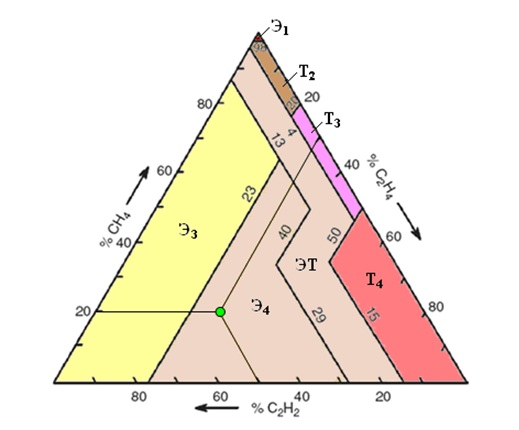
A DGA-tester (dissolved gas analyzer) is used to measure gas concentrations.
One of the most popular techniques is the Duval Triangle. This is an approach to determining the transformer defects by graphics rather than by computational logic. The technique is based on measuring the concentration of three gases — C2H2, C2H4, and CH4. Using the numerical values of these concentrations, a point is plotted on a graph represented in the form of a triangle. According to the Duval technique, the triangle area is divided into seven zones, and each zone corresponds to a specific transformer defect. A conclusion is made about the type of defect depending on the zone where the point gets in.
The point is plotted as follows. The obtained gas concentrations of C2H2, C2H4, and CH4 are converted into percentages each of which is plotted on the appropriate side of the triangle. From each point on the triangle side, three lines are drawn parallel to the lagging side, and the intersection thereof will produce the desired point for diagnosing the defect.
The question arises: is there a simpler alternative to the Duval triangle? In order to obtain primary information about the status of a transformer, measurement of concentration and its change dynamics may be used for one gas only — hydrogen. Normally, this information is sufficient at least to make a reasonable decision of performing a deeper diagnostic evaluation based on a greater amount of gases.
Causes of occurrence and measurement of hydrogen in oil
Hydrogen occurs in transformer oil as a recombination gas when the weakest C-H bonds are broken under the influence of partial discharges as a result of the ionization reaction.
Why is it convenient to use hydrogen for obtaining the primary information of the transformer status? There are several reasons. Firstly, hydrogen is one of the first gases which are formed when problems occur to a transformer. It begins to evolve already at the temperature of 150 °C. Secondly, measurement of hydrogen in oil is convenient to perform due to the fact that this gas is characterized by low solubility in oil and high diffusion capacity; therefore, it is easier to detect it even in small concentrations diagnosing a possible defect at the initial stage.
Transformer hydrogen express detection provides a time allowance for carrying out a complete chromatographic dissolved gas analysis (if necessary).
Transformer hydrogen and moisture analyzer
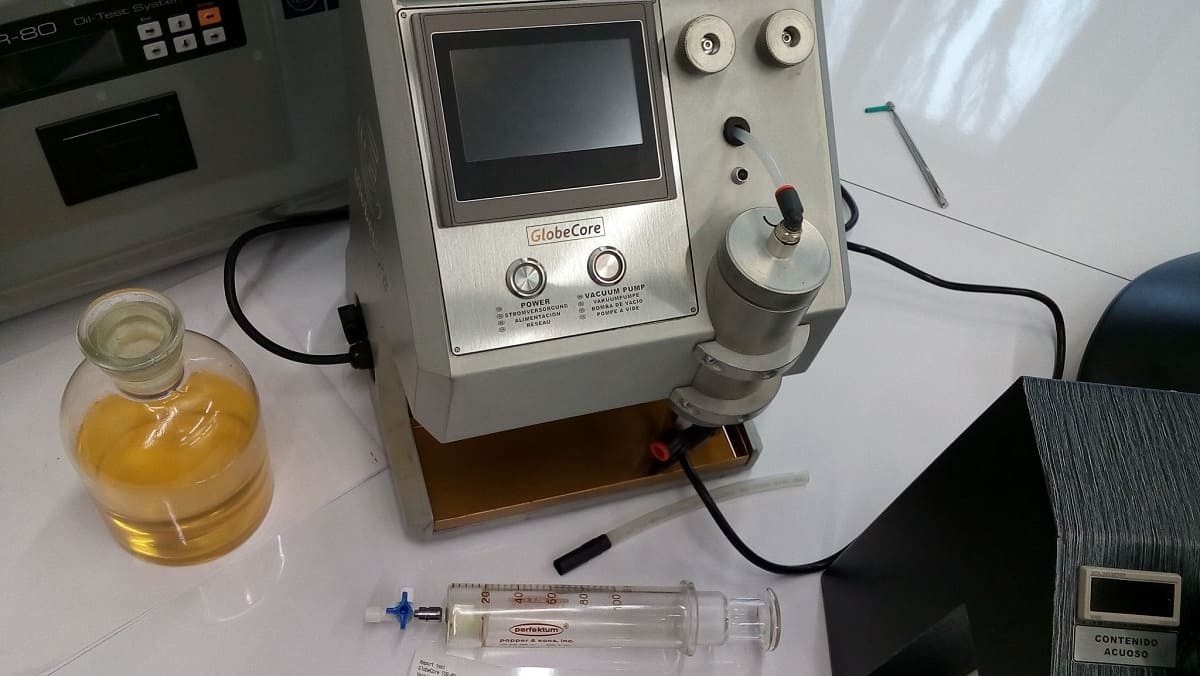
TOR-2 oil hydrogen tester has compact dimensions and a low weight; therefore, it is easy to carry and transport to a transformer operation site for analysis of taken samples. TOR-2 provides the most necessary set of parameters for online diagnostic evaluation of transformer defects. It is used to detect hydrogen in transformer oil and water in mineral and essential oils.
The main advantages of TOR-2 instrument:
- Training how to operate the instrument takes only a few hours, and oil testing is performed by one person easily and quickly.
- High measurement rate. After a sample is taken, the instrument must be turned on, and the measuring process must be started. The first results will be available on LCD-panel in ten minutes.
- A mini-printer is integrated into the instrument for operation convenience and data processing and allows printing out a slip with test results at all times.
- High measurement accuracy is achieved due to design features of sensors and their direct contact with oil. No contaminants contained in an oil sample affect the operation of a capacitive moisture sensor. And a hydrogen sensor detects hydrogen only without being sensitive to other gases.
- The instrument is versatile and can be used for diagnostic evaluation and prevention of developing defects not only in transformers, but also in oil-filled cables, high-voltage bushings, shunt reactors, and on-load tap changers. Therefore, electric power companies obtain a simple solution that ensures trouble-free operation of electrical equipment.
For more information, please use some of the contact details that you can find in the appropriate website section.

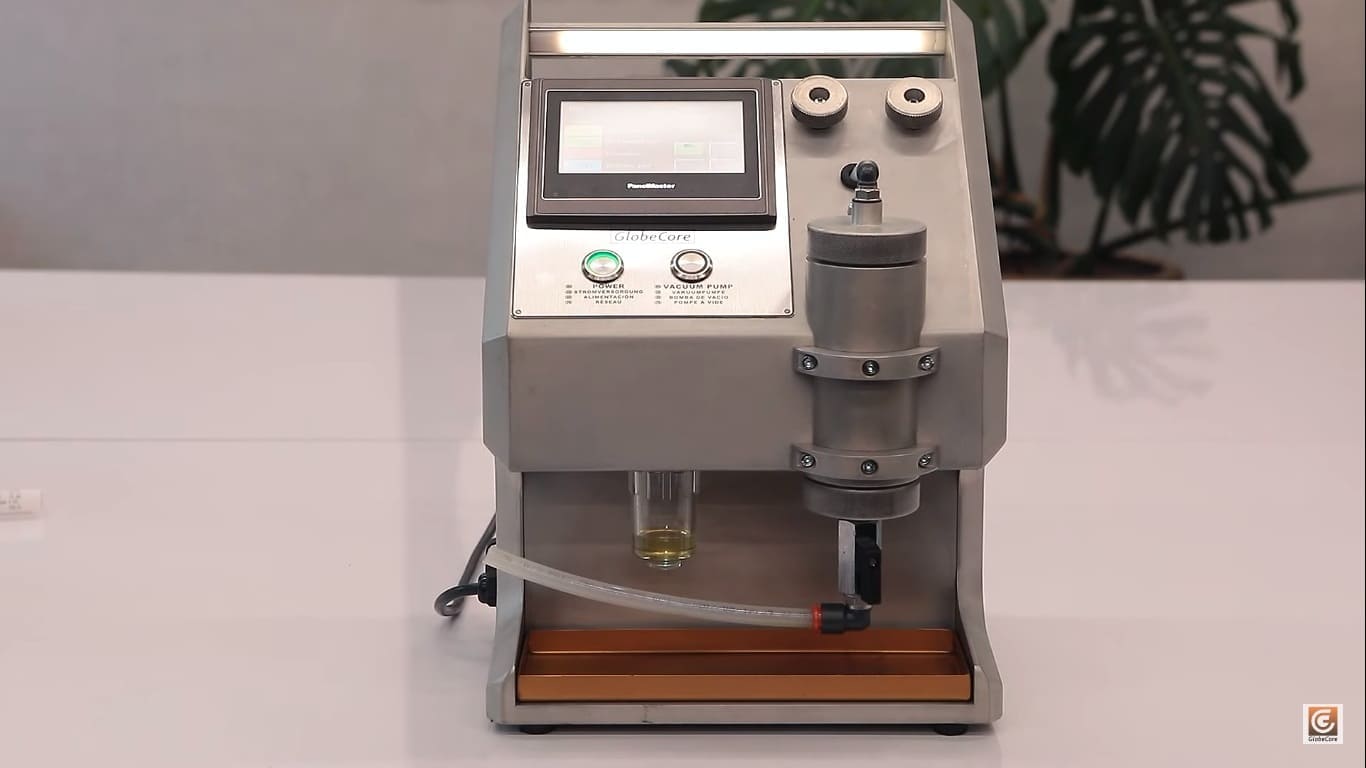
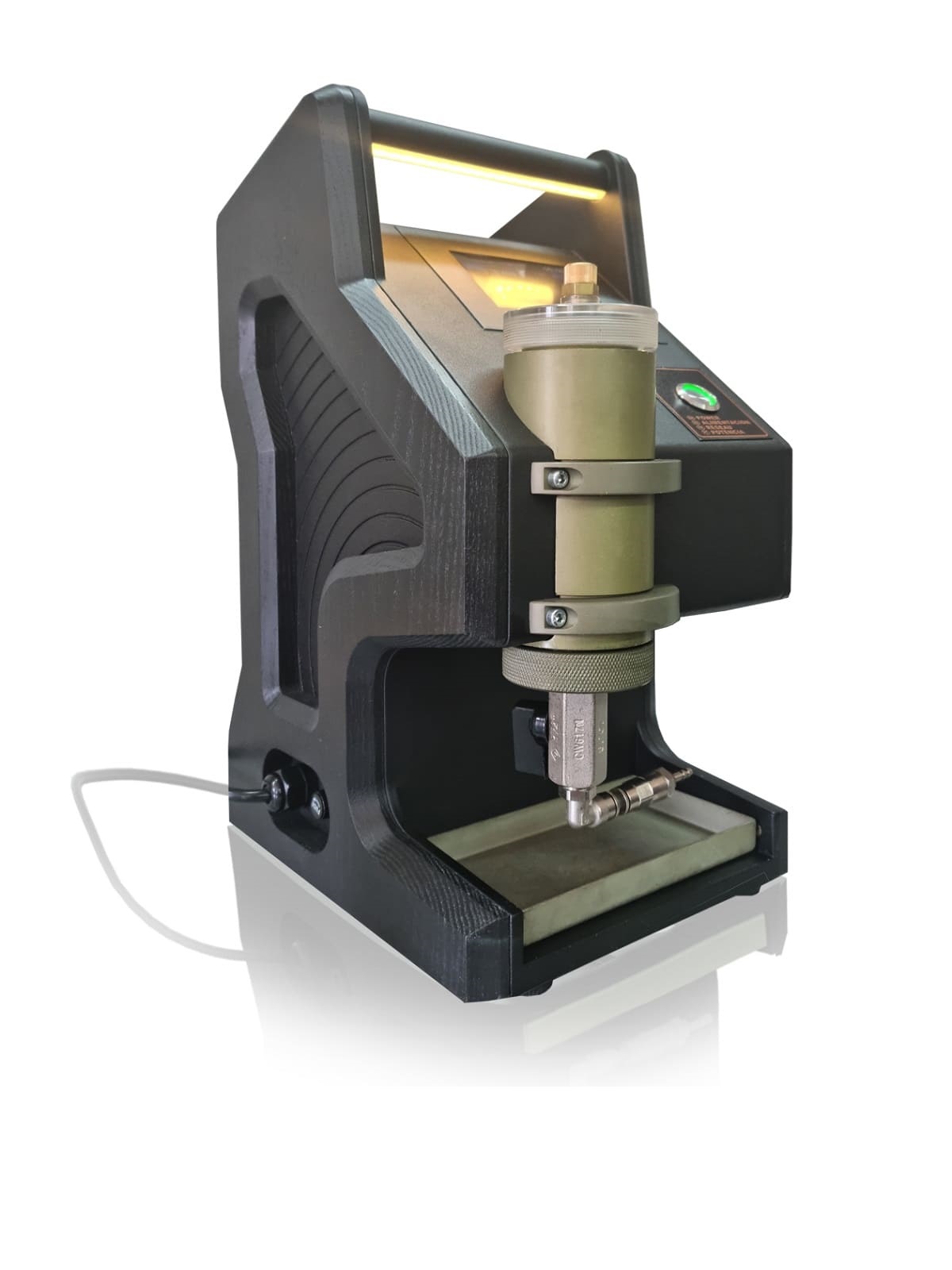 TOR-2 Hydrogen and ...
TOR-2 Hydrogen and ...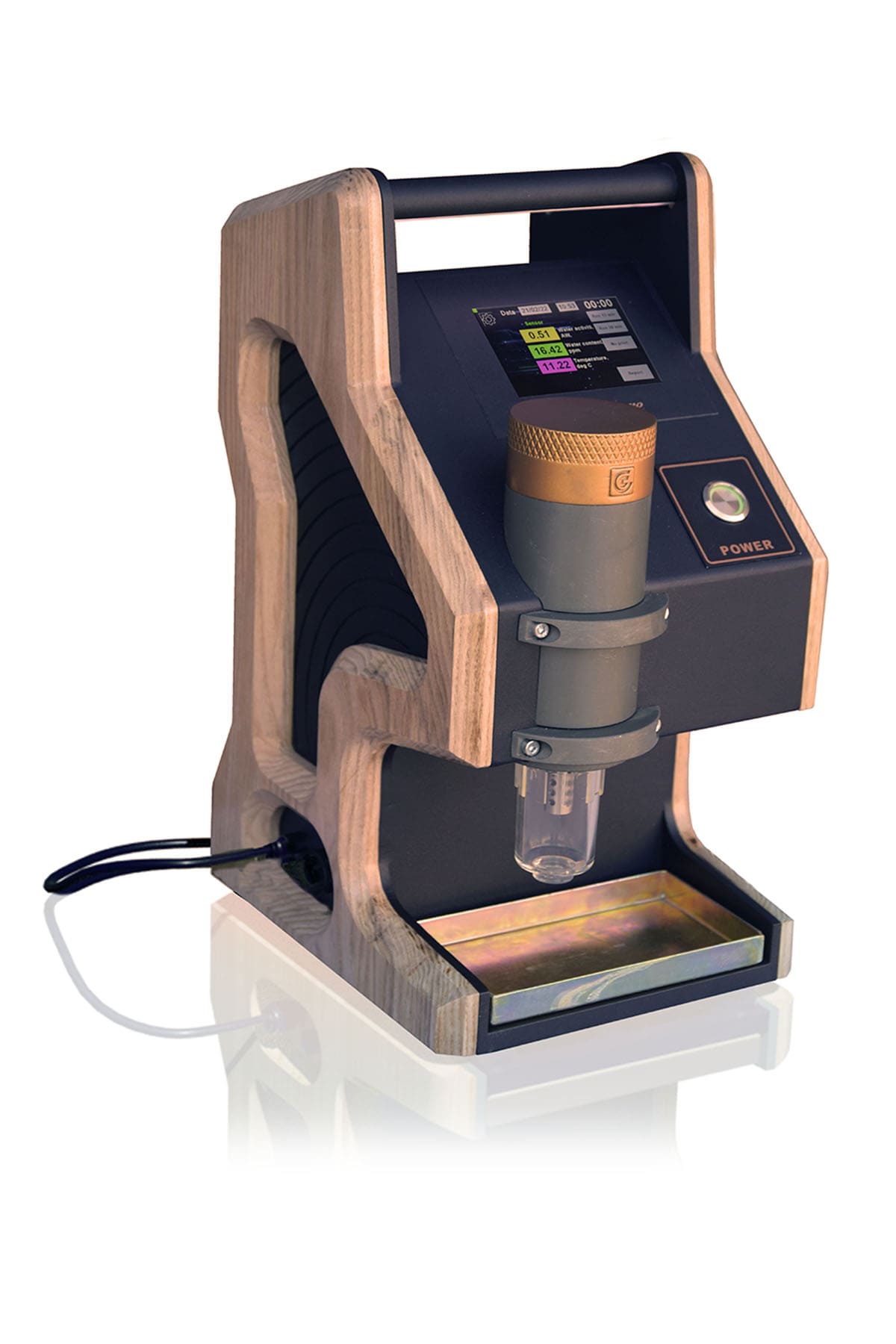 TOR-1 Oil Moisture ...
TOR-1 Oil Moisture ...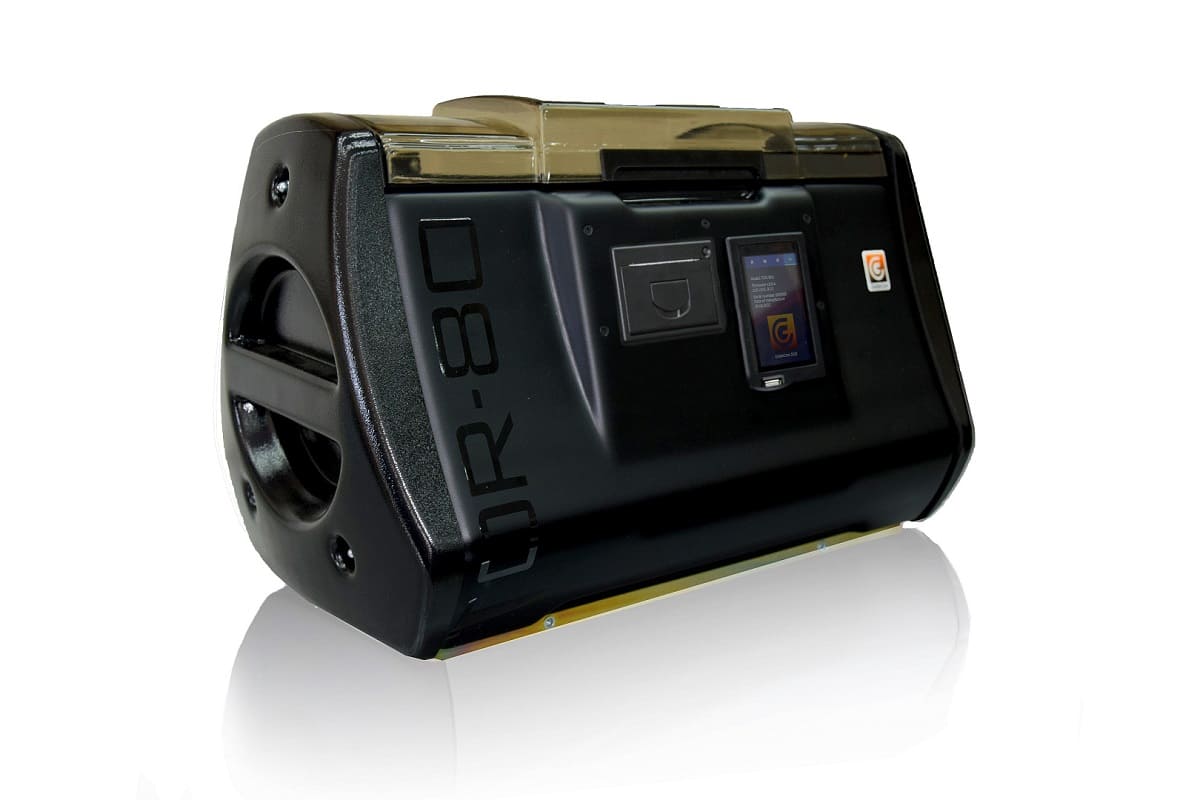 TOR-80 (TOR-80 LSL) ...
TOR-80 (TOR-80 LSL) ...